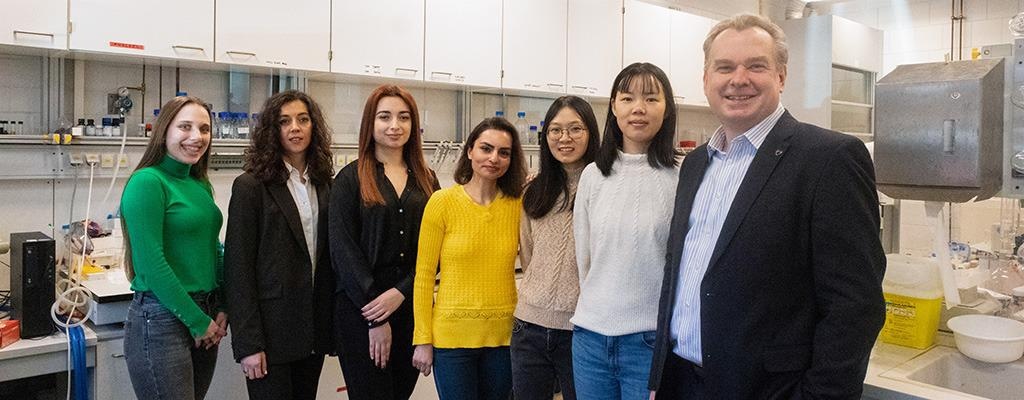Reviewed by Danielle Ellis, B.Sc.Mar 25 2022
Self-defense is a skill that cells have mastered. Their membranes allow essential compounds to get through but keep out others, including ones that could be utilized to fight disease. Cell research is focused on overcoming this inherent barrier.
 The new discovery, which deals with overcoming the natural barrier of the cell wall, is derived from a method that Werner Nau’s research team has been developing since 2015. Image Credit: Jacobs University
The new discovery, which deals with overcoming the natural barrier of the cell wall, is derived from a method that Werner Nau’s research team has been developing since 2015. Image Credit: Jacobs University
Scientists from Jacobs University Bremen and the University of Santiago de Compostela in Spain have now accomplished this feat. They have devised a novel means of delivering medicines and peptides into cells. Their findings have now been published in the prestigious journal Nature.
Our method has potential for broad application.”
Werner Nau, Professor, Chemistry, Jacobs University
It is based on a brand-new chemical notion that scientists have been working on since 2015. To get past the cell membranes, scientists had to use complicated and occasionally hazardous formulas.
Water-soluble clusters based on the chemical element boron are being used by Jacobs University researchers to achieve this result. They revealed in studies that these boron clusters have an ideal size at which the penetration process is most efficient.
“If the molecules are too small, they don’t work. If they are too large, they have membrane-damaging properties,” reported Andrea Barba-Bon, the first author of the study and a post-doctoral researcher who carried out the initial successful experiments.
The researchers were successful in implanting a variety of bioactive chemicals into cells. Those that successfully conquered antibiotic resistance were among them.
Javier Montenegro, in whose Spanish research group the cell biology experiments were performed, said “There are many potential applications to be developed with this method, for example, for the delivery of the next generation of therapeutics such as short peptides or even protein-based drugs.”
Active compounds such as peptides are in high demand. They are utilized in cancer treatments, antibiotics, vaccinations, and plenty of other new medications. In the cosmetics sector, they are also used.
In addition, the procedure has the ability to increase basic cell biology research. It makes transporting positively charged and neutral medication molecules or fluorescent dyes into living cells easier, which was previously impossible.
The journal Nature, first published in the United Kingdom in 1869, is one of the most powerful and prominent publications in the field of natural sciences.
After several years of intensive basic research, it is now a great success for us to be able to publish the application potential of our research results there.”
Werner Nau, Professor, Chemistry, Jacobs University
Source:
Journal reference:
Barba-Bon, A., et al. (2022) Boron clusters as broadband membrane carriers. Nature. doi.org/10.1038/s41586-022-04413-w.